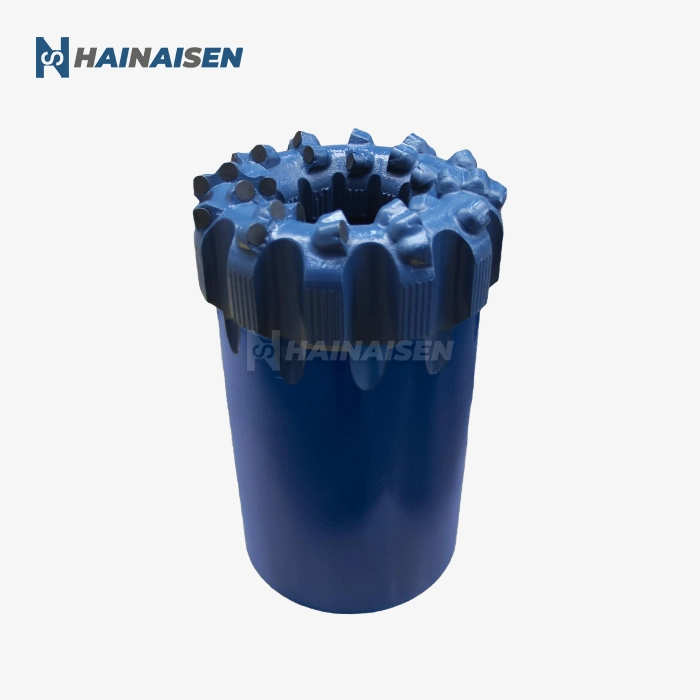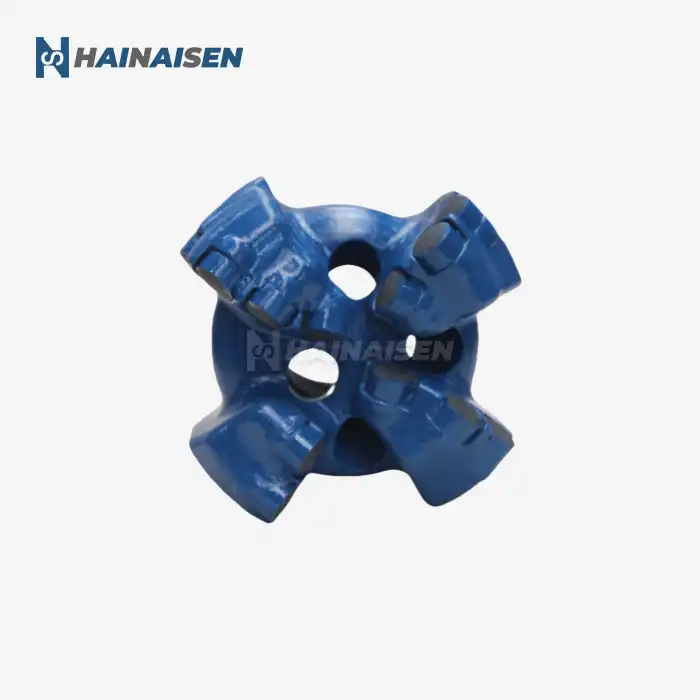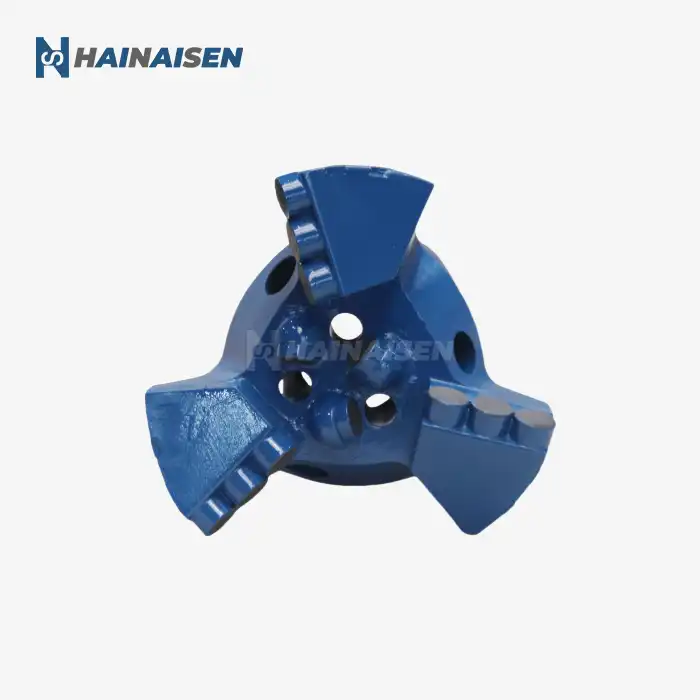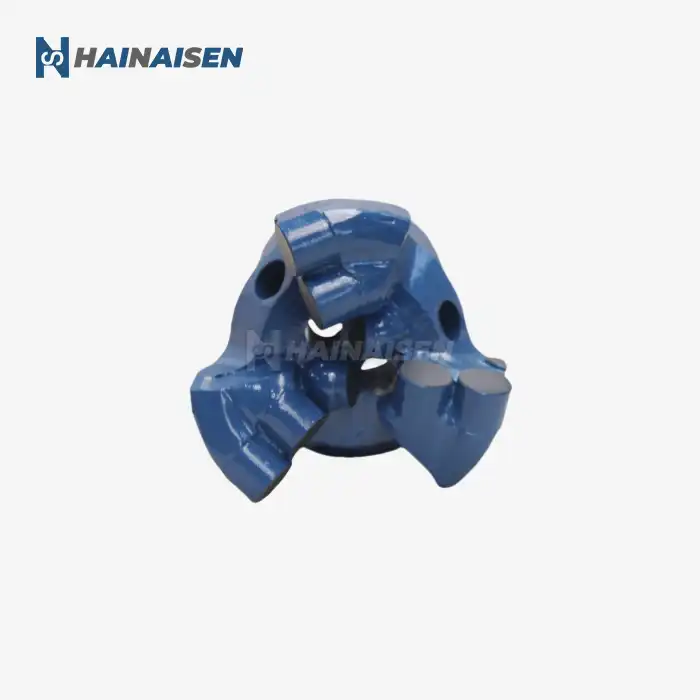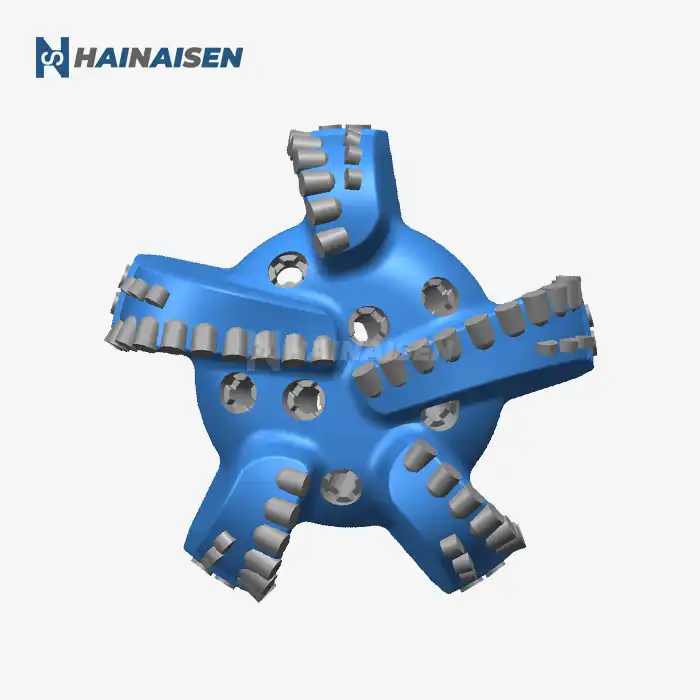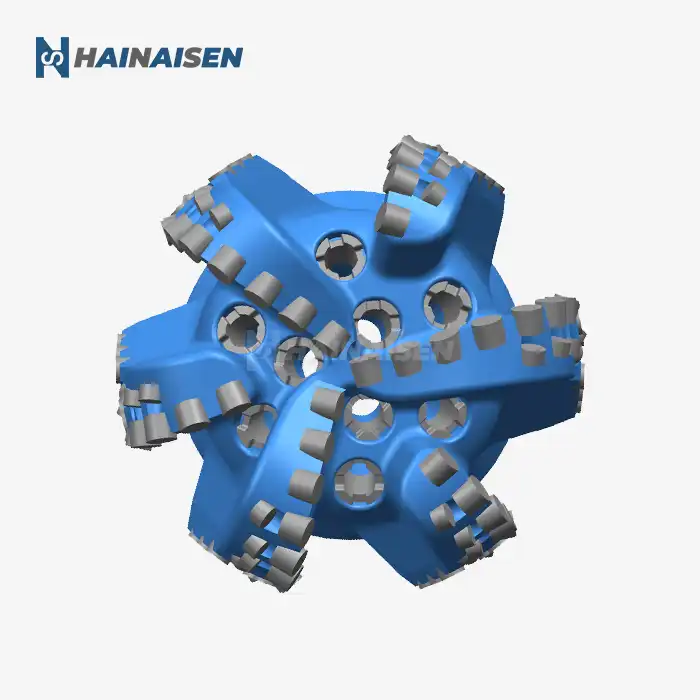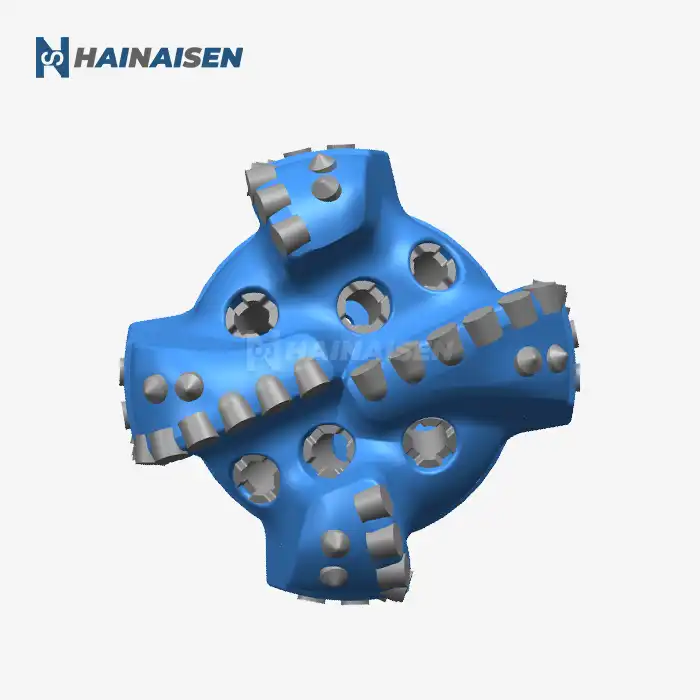Decoding WOB: Impact on Drilling Efficiency
Weight on Bit (WOB) plays a pivotal role in determining the drilling efficiency of Api Polycrystalline Diamond Drill Bits. It's the force applied to the bit that enables it to crush and shear the rock formation. However, finding the right WOB is not a one-size-fits-all approach – it requires careful consideration and testing.
The WOB Sweet Spot
Every drill bit has an optimal WOB range where it performs most efficiently. Too little weight, and the bit may skate across the formation without making significant progress. Too much weight can lead to excessive wear, premature failure, or even bit damage. The key is to find the "sweet spot" where the bit achieves maximum ROP without compromising durability.
Formation-Specific Considerations
Different rock formations demand different WOB settings when using an Api Polycrystalline Diamond Drill Bit. Softer formations generally require less weight, allowing the sharp polycrystalline diamond cutters to shear the rock effectively. Harder formations may necessitate increased WOB to ensure adequate penetration. It's crucial to adjust WOB based on real-time drilling data and formation characteristics.
Dynamic WOB Management
Dynamic WOB management tools are often used in modern drilling operations. These high-tech systems use real-time info from the hole to change the bit's weight all the time. This flexible method makes sure that the bit works at its best even when it hits different types of rock and drilling situations.

Flow Rate Dynamics: Maximizing Bit Performance
While WOB provides the force necessary for drilling, flow rate is equally critical in maximizing the performance of Api Polycrystalline Diamond Drill Bits. Proper flow rate management ensures effective hole cleaning, bit cooling, and hydraulic energy transfer to the formation.
Hydraulic Horsepower Optimization
The flow rate directly impacts the hydraulic horsepower delivered to the bit. Optimizing this parameter can significantly enhance cutting efficiency and ROP. Higher flow rates generally provide better hole cleaning and more effective cuttings removal. However, excessive flow can lead to erosion of the bit body or formation washout in softer rocks.
Nozzle Configuration and Bit Hydraulics
Api Polycrystalline Diamond Drill Bits are designed with sophisticated hydraulic features. The nozzle configuration plays a crucial role in directing flow across the bit face and through the junk slots. Proper nozzle sizing and placement ensure optimal cleaning of the cutting structure and efficient cuttings evacuation.
Balancing Flow and WOB
It's important to note that flow rate and WOB are interconnected. Higher flow rates can create a hydraulic lift effect, potentially reducing the effective WOB. Conversely, increased WOB can restrict flow paths, affecting the bit's hydraulic performance. Finding the right balance between these parameters is essential for optimal drilling efficiency.
ROP Optimization: Balancing WOB and Flow
Achieving the highest possible Rate of Penetration (ROP) while maintaining bit longevity is the ultimate goal in drilling operations. This requires a careful balance of WOB and flow rate, tailored to the specific Api Polycrystalline Diamond Drill Bit design and formation characteristics.
Integrated Parameter Analysis
Modern drilling operations utilize sophisticated data analysis tools to correlate WOB, flow rate, and ROP in real-time. This integrated approach allows for rapid adjustments to drilling parameters, ensuring optimal performance throughout the bit run.
Formation-Specific Optimization
Different lithologies require different optimization strategies when using an Api Polycrystalline Diamond Drill Bit. For instance, in softer formations, maximizing hydraulic horsepower through increased flow rates might yield better results than applying high WOB. Conversely, harder formations might benefit from higher WOB combined with moderate flow rates to prevent bit balling and ensure efficient cutting removal.
Drill String Dynamics
A lot of things affect how WOB, flow rate, and the movement of the drill string work together. In ROP and bit life, vibrations, stick-slip, and whirl can all make a difference. Getting these factors just right can help reduce harmful vibrations, which makes drilling go more smoothly and extends the life of the bit.
Continuous Improvement Process
ROP optimization is an ongoing process. As drilling progresses and formation characteristics change, continuous monitoring and adjustment of WOB and flow rate are necessary. This adaptive approach ensures that the Api Polycrystalline Diamond Drill Bit performs at its peak throughout the entire drilling operation.
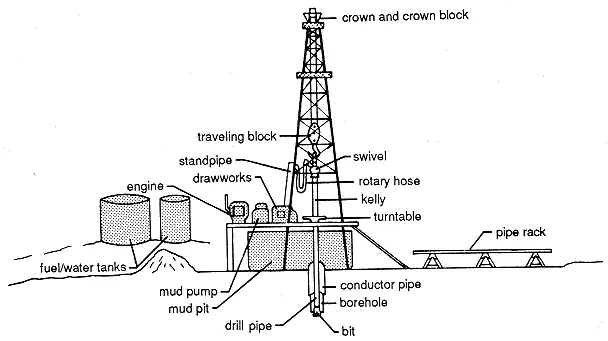
Conclusion
A complicated but necessary part of modern drilling is finding the best Weight on Bit (WOB) and flow rate for Api Polycrystalline Diamond Drill Bits. Drilling teams can greatly improve ROP, extend bit life, and lower total drilling costs by carefully balancing these factors. The important thing is to know how WOB, flow rate, bit design, and formation traits are all connected.
Even more so as digging tools get better, it is crucial to finetune parameters very exactly. Utilizing advanced hydraulic modeling, real-time data analysis, and methods for continuous improvement, operators can push the limits of how efficiently they can drill.
Shaanxi Hainaisen Petroleum Technology Co., Ltd. provides state-of-the-art Api Polycrystalline Diamond Drill Bits designed for maximum performance for any driller looking to increase drilling efficiency and overcome difficult formations. When it comes to choosing the best bit and drilling parameters for your particular application, our knowledgeable staff is prepared to help. Water well drilling, coal mining, or oil and gas exploration—we have the know-how and technology to improve your drilling operations.
Ready to take your drilling performance to the next level? Contact our dedicated team of drilling experts today at hainaisen@hnsdrillbit.com to discuss your specific needs and discover how our advanced Api Polycrystalline Diamond Drill Bits can revolutionize your drilling operations.
References
1. Smith, J.R. et al. (2023). "Advanced Techniques in WOB and Flow Rate Optimization for PDC Bits." Journal of Petroleum Technology, 75(4), 62-78.
2. Johnson, A.K. (2022). "Hydraulic Optimization of Polycrystalline Diamond Drill Bits: A Comprehensive Study." Drilling Engineering Review, 18(2), 105-123.
3. Zhang, L. et al. (2024). "Real-Time ROP Optimization Using Machine Learning Algorithms." SPE Drilling & Completion, 39(1), 15-29.
4. Brown, M.E. (2023). "Formation-Specific Drill Bit Parameter Optimization: Case Studies from Global Drilling Operations." International Journal of Rock Mechanics and Mining Sciences, 152, 104982.
5. Patel, R.V. and Thompson, S.L. (2024). "Advances in Drill String Dynamics Modeling for Enhanced Bit Performance." Journal of Energy Resources Technology, 146(3), 032902.
6. Lee, C.H. et al. (2023). "Integrated Approach to Energy Efficiency in Drilling Operations: Balancing WOB, Flow, and Bit Design." Energy, 264, 126311.



